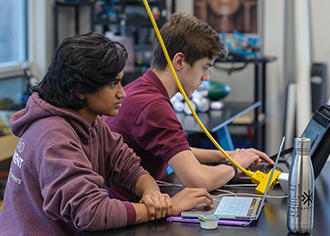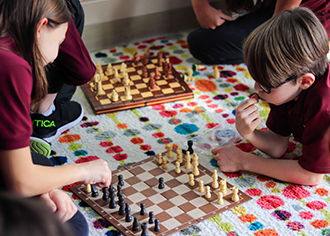International Spotlight: Romania

Romania is a beautiful country with a culture all its own. It is a hidden gem in Europe. This southeast European country has a long history of cultures mixing to create the Romanian culture we see today. Learn more from our 8 fun facts, famous people, and landmarks below before you take your adventure around the world at our International Day on March 28!
Fun Facts
The Carpathian Mountains, also known as the Transylvanian Alps, make up around a third of the country.
The Romanian language is about 1,300 years old! Bucharest, Romania’s capital, used to be called the “Little Paris” due to its elegant architecture built in the period between the two World Wars.
The city’s Triumphal Arch (Arcul de Triumf) was constructed in 1935 to be modeled after the Arc de Triomphe in Paris.
The flag of Romania consists of red, yellow, and blue vertical stripes. These represent Walachia, Moldavia, and Transylvania.
- Walachia: Walachia is situated north of the Lower Danube and south of the Southern Carpathians.
- Moldavia: This is a historical region corresponding to the territory between Eastern Carpathians and the Dniester (Nistru) River. Only the western half of Moldavia is part of Romania. The eastern side is part of the Republic of Moldova.
- Transylvania: Located in central Romania, it is known for medieval towns, mountainous borders, and castles like Bran Castle, a Gothic fortress associated with the legend of Dracula.
Transylvania was home of Vlad the Impaler (Vlad Țepeș), prince of Wallachia, who inspired “Dracula.”
Romania is situated halfway between the North Pole and the equator.
The tallest rock sculpture Europe is in Romania, The statue of Dacian King Decebalus. King Decebalus was the last king of Romania from 87-106 A.D.
The first European city to have electric street lights was Timishwara (Timișoara) in Romania.
Famous People

Mihai Eminescu was a Romantic poet, novelist, and journalist, generally regarded as the most famous and influential Romanian poet, as well as the first modern poet in Romanian literature.

Mircea Eliade was a Romanian historian of religion, fiction writer, philosopher, and professor at the University of Chicago. He was a leading interpreter of religious experience, who established paradigms in religious studies that persist to this day.


Constantin Brâncuși was a Romanian sculptor, painter and photographer. Considered a pioneer of modernism, one of the most influential sculptors of the 20th-century, Brâncuși is called the patriarch of modern sculpture.


Henri Coandă was a Romanian inventor, aerodynamics pioneer, and builder of an experimental aircraft (the Coandă-1910) described by himself in the mid-1950s as the world's first jet, a controversial claim disputed by some and supported by others.


Elie Wiesel was a Romanian-born writer, professor, political activist, Nobel laureate, and Holocaust survivor. He is best known for his book Night.


Nadia Comăneci is a Romanian retired gymnast and a five-time Olympic gold medalist, all in individual events. In 1976 at the age of 14, Comăneci was the first gymnast to be awarded a perfect score of 10.0 at the Olympic Games.


Gheorghe Hagi is a Romanian soccer manager and former professional player. He played the attacking midfielder position.


Angela Gheorghiu is a Romanian Opera soprano. She has performed at New York’s Metropolitan Opera, London’s Royal Opera, the Vienna State Opera, and many other opera houses in Europe and the United States.
Landmarks
- Danube Delta
- Churches of Moldavia: Sucevița, Moldovița, Voroneț
- Dacian Fortress of the Oraștie Mountains: Sarmizegetusa Regia
- Historic Centre of Sighișoara
- The Merry Cemetery and the Wooden Churches of Maramureș
- Salina Turda
- The Palace of the Parliament
- Transfăgărășan
Interested in learning more about Romania and other countries? Join us for International Day on March 28th!






